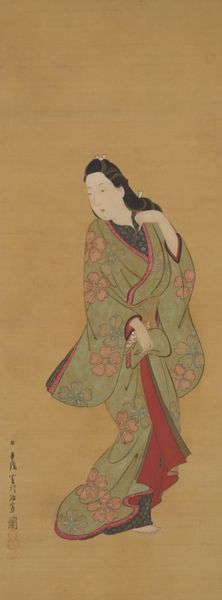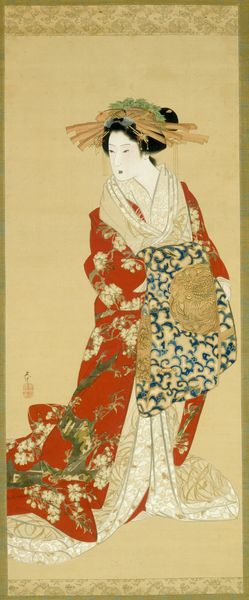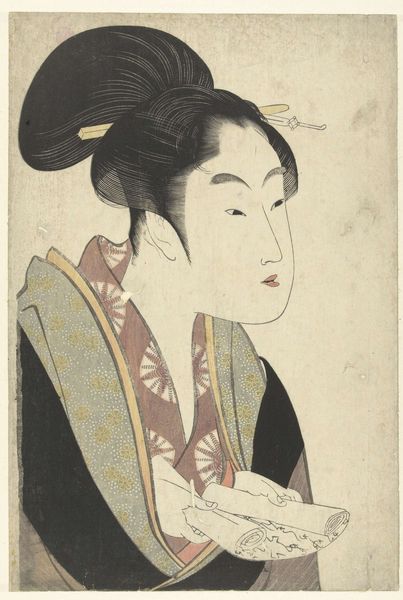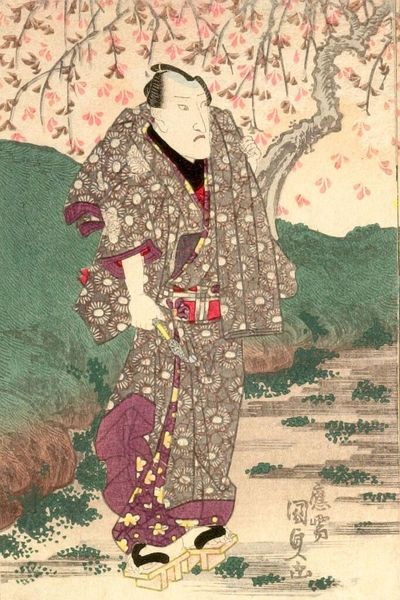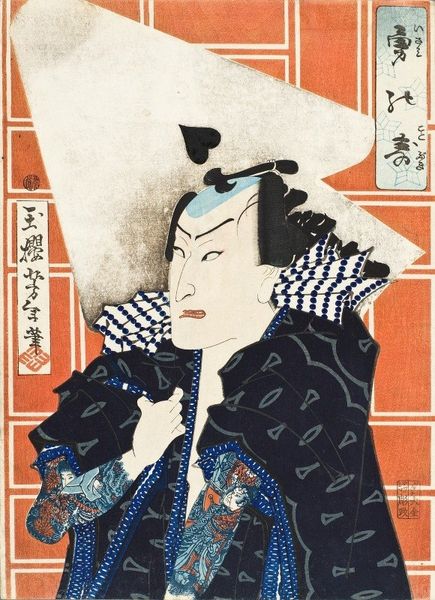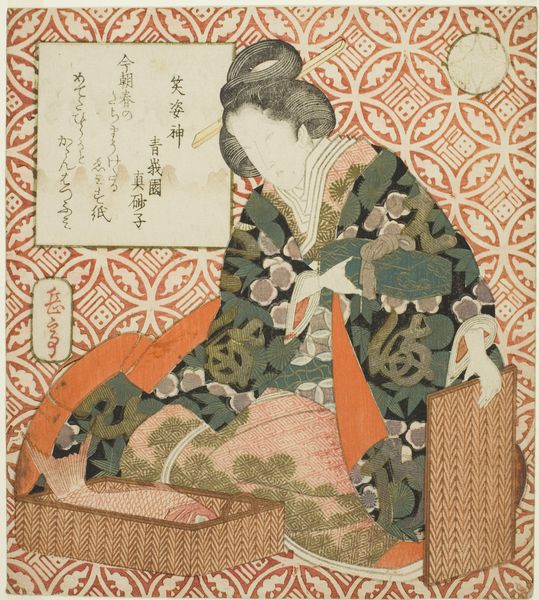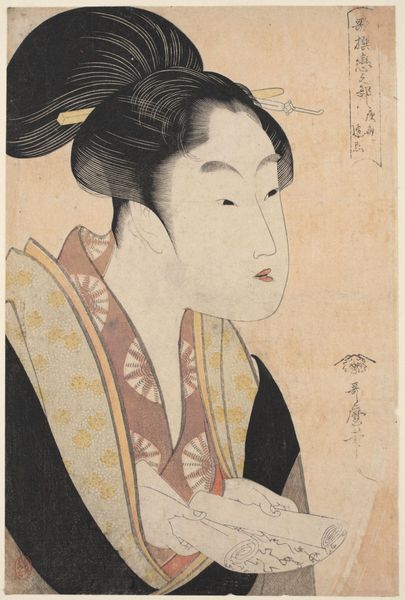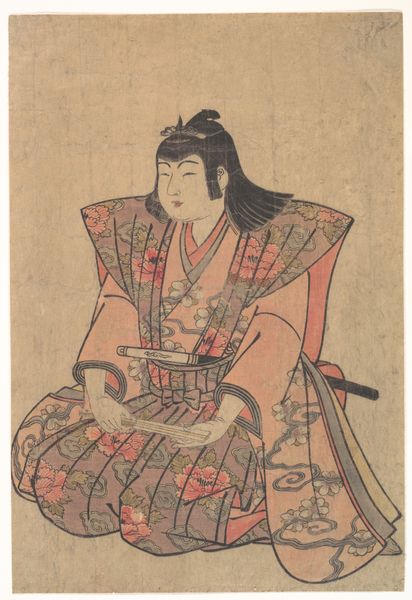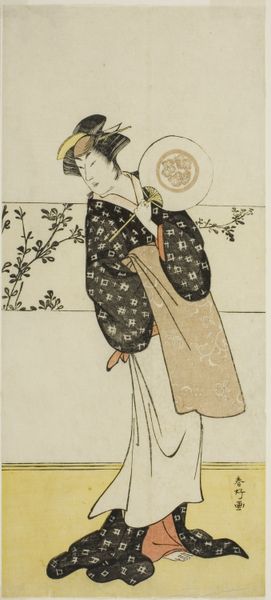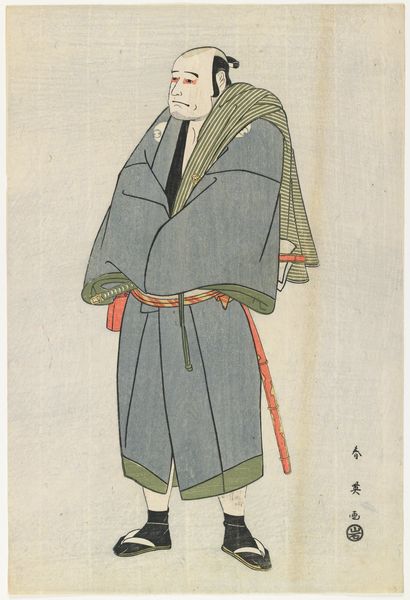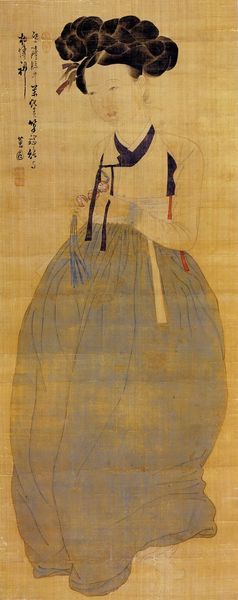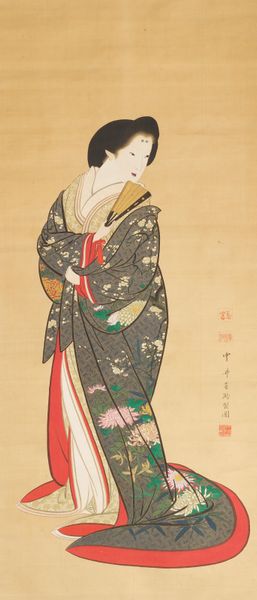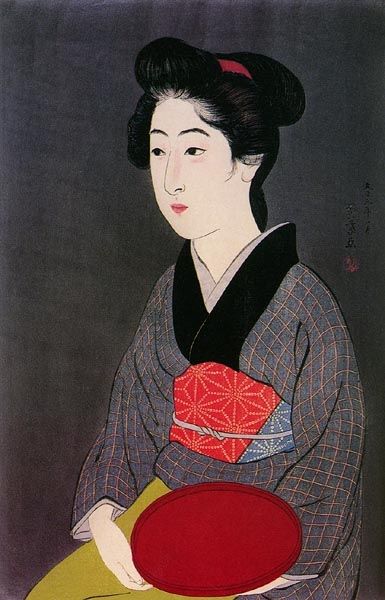
Portrait of Imperial Prince Son’en c. early 19th century
0:00
0:00
watercolor, impasto, hanging-scroll, ink
#
portrait
#
water colours
#
asian-art
#
watercolor
#
impasto
#
hanging-scroll
#
ink
#
watercolor
Dimensions: 80 3/8 × 21 1/2 in. (204.15 × 54.61 cm) (image)39 7/8 × 27 1/2 in. (101.28 × 69.85 cm) (mount, without roller)
Copyright: Public Domain
Editor: Here we have Sakai Hōitsu’s "Portrait of Imperial Prince Son’en," created around the early 19th century. It's rendered with ink and watercolors on a hanging scroll. I find the Prince's gaze so intriguing – there's a thoughtfulness, maybe even a hint of melancholy. How do you interpret this work? Curator: What strikes me most is the artist’s deliberate choice to portray Prince Son’en with such nuanced simplicity. This wasn't just a depiction of power; it was a portrayal of a person deeply entrenched in a complex socio-political environment. Notice the weight of the robe, and the details on the borders - how do they situate him within the conventions of courtly life, while potentially commenting on the constraints it imposed? Editor: I see what you mean about the constraints. Was this perhaps a commentary on the role of the imperial family at the time? Curator: Exactly! Think about the late Edo period: the shogunate’s power was growing, eclipsing the Imperial Court. Could this portrait subtly be exploring Prince Son’en’s diminished agency within that structure? His gentle expression then might signify resignation, or perhaps quiet resistance. Editor: That reframes the whole image for me! I was focused on the aesthetic qualities, but understanding the historical context adds so much depth. Curator: The aesthetic and the political are always intertwined. The choice of traditional materials, the composition - everything communicates meaning. It’s a testament to the power of art to reflect and even critique societal power structures. Editor: It’s amazing how a portrait can speak volumes about an era. I'll never look at portraits the same way again! Curator: Indeed. Questioning established notions and seeking social implications within visual representation expands the artistic interpretation process.
Comments
No comments
Be the first to comment and join the conversation on the ultimate creative platform.
